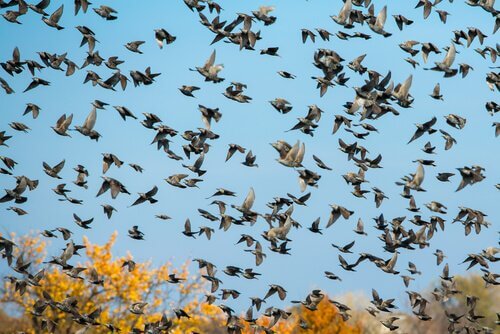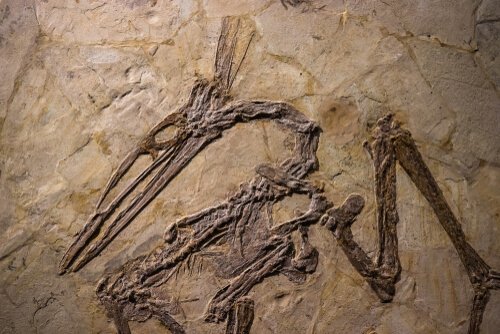What do We Know About the Origin of Birds?


Written and verified by the vet Eugenio Fernández Suárez
The origin of birds and their evolution is one of the biggest mysteries for paleontologists and biologists. Want to learn what we know at the moment?
The origin of birds
There is some consensus: many scientists believe that birds evolved from dinosaurs. More specifically, they are thought to come from the coelurosaurs, a family of dinosaurs that included species like the famous velociraptor.
As far as we can tell, the link between birds and dinosaurs was the pterodactyl, or archaeopteryx, which were like a cross between the birds we see nowadays and feathered dinosaurs. It had large feathers, razor sharp teeth, and was able to fly.
The study of the origin of birds first started around the time of Darwin. One year after he published On the Origin of Species, researchers discovered the first fossilized feather. That was the starting point for all kinds of theories and potential links in the evolution of birds.

How are birds similar to dinosaurs?
One big similarity between birds and dinosaurs are their feathers. Even though many had simple, hairlike feathers, there were also some dinosaurs with feathers almost as complex as birds’.
But there’s an even bigger similarity between them: their bone structures. There are some clear parallels in their skeletons, especially the wishbone and breastbone, both very important for birds.
Even dinosaurs’ lungs had similar air sacks to the ones we see in birds. Some scientists think dinosaurs also slept in a similar way to birds, putting their head under their limbs to keep it warm.
Dinosaur biology and behavior also gives us some clues to the origin of birds. Both of them have (and had) a medullary cavity, a calcium-rich area that helps birds produce the shells for their eggs.
Many fossilized dinosaurs have been found incubating their eggs. Plus, the fact that baby dinosaurs didn’t have teeth suggests that their parents regurgitated their food back to them. Scientists have also found small stones in the digestive systems of dinosaurs. These would have helped them digest, just like the gizzards in birds.

How birds started to fly
But, if birds have their origin in dinosaurs, how did they evolve to be able to fly? It’s important to remember here that pterodactyls weren’t dinosaurs. This has led to two theories: either sprinting dinosaurs started using wings as a way to balance, or tree-dwelling dinosaurs used them to fall more safely.
So, that would mean wings didn’t start out as a tool for flight. Little by little, their “arms” evolved to help them balance, or to help them fall slower. Then, they moved on to gliding, and more and more to the point that their descendants (birds) could fly.
When dinosaurs went extinct, some of them would have had to have survived. Their descendants would have made the evolution of birds possible, and here we are nowadays, with millions of them flying around all over the world. Isn’t it amazing?
All cited sources were thoroughly reviewed by our team to ensure their quality, reliability, currency, and validity. The bibliography of this article was considered reliable and of academic or scientific accuracy.
- Feduccia, A. (1999). The origin and evolution of birds. Yale University Press.
This text is provided for informational purposes only and does not replace consultation with a professional. If in doubt, consult your specialist.